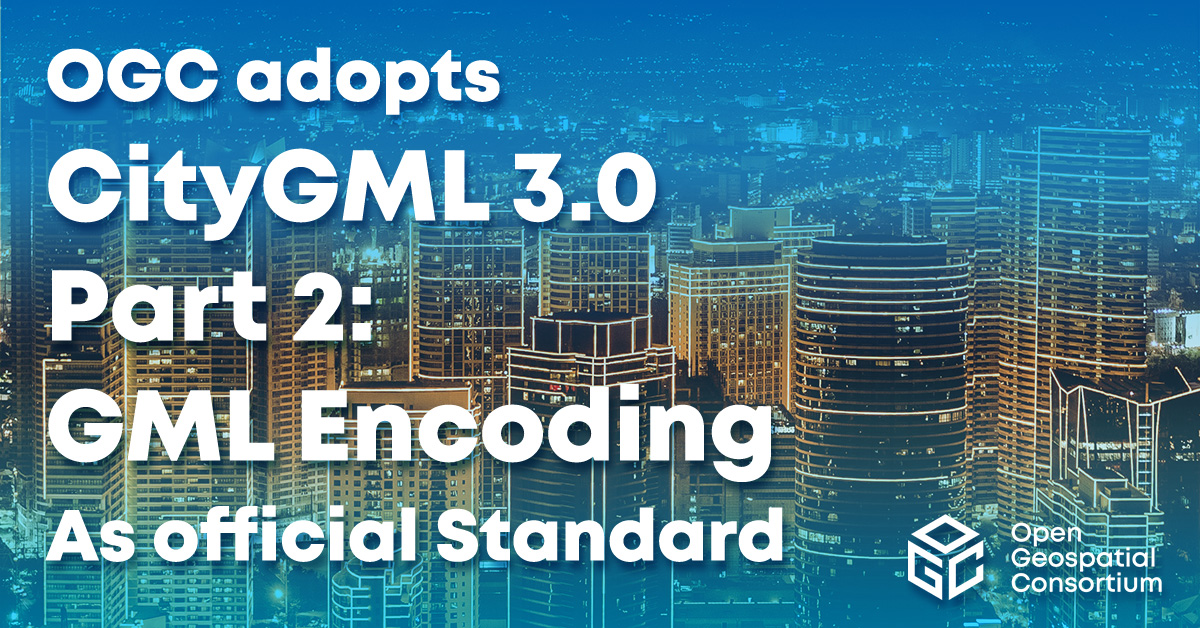The Open Geospatial Consortium (OGC) is excited to announce that the OGC Membership have approved the OGC City Geography Markup Language (CityGML) Part 2: GML Encoding Standard for adoption as an official OGC Standard.
The CityGML 3.0 GML Encoding Standard presents the GML encoding of the concepts defined by the CityGML 3.0 Part 1: Conceptual Model (CM) Standard, which was approved as an OGC Standard in 2021. The GML encoding is compliant to OGC GML versions 3.2 and 3.3 (thus also ISO 19136). This encoding can be used to store and exchange 3D city models in the GML format as data sets or via web services.
Since its first publication by OGC in 2008, CityGML has been an open standard used for the storage and exchange of virtual 3D city models. CityGML allows the integration of urban geodata for use across a variety of applications, including urban and landscape planning; Urban Digital Twins for Smart Cities; the Metaverse; Building Information Modeling (BIM); mobile telecommunication; disaster management; 3D cadastre; tourism; vehicle & pedestrian navigation; autonomous driving and driving assistance; facility management; and energy, traffic, and environmental simulations.
CityGML defines a “City” in a broad fashion to comprise not just built structures, but also the land surface, vegetation, water bodies, city furniture, and more. Despite its name, CityGML is useful for large areas and small regions, not just cities, and can represent real-world terrain and 3D objects at different Levels Of Detail (LOD) simultaneously. CityGML enables the consistent representation of 3D urban objects across different Geographic Information Systems and users.
CityGML 3.0 is an evolution of the previous versions 1.0 and 2.0 of CityGML that further enables the cost-effective sustainable maintenance of 3D city models. While previous versions standardized a GML exchange format, CityGML 3.0 standardizes the underlying information model and can thus be implemented in a variety of technologies beyond GML. As a result, governments and companies can increase the Return On Investment (ROI) of their 3D city models by being able to put the same models into play across different technology platforms and application fields.
This Part 2 of the Standard defines how the concepts developed in Part 1 are realized using XML and GML technologies. The CityGML 3.0 GML encoding represents a full mapping of the Conceptual Model. The encoding is derived fully automatically from the UML model following the UML-to-GML encoding rules as defined by ISO 19136.
A collection of example data sets for the CityGML 3.0 GML Encoding is available from the OGC CityGML-3.0 Encodings Public GitHub Repository.
OGC Members interested in staying up to date on the progress of this standard, or contributing to its future development, are encouraged to join the CityGML Standards Working Group (SWG) via the OGC Portal. Non-OGC members who would like to know more about participating in this SWG are encouraged to contact the OGC Standards Program.
As with any OGC Standard, the open CityGML Part 2: GML Encoding Standard is free to download and implement. Interested parties can learn more about, view, and download the Standard from OGC’s CityGML Standard Page.
